Abstract
1. `Autoregulatory escape' (Folkow, Lewis, Lundgren, Mellander & Wallentin, 1964a) in which intestinal blood flow escapes from the constrictor influence of splanchnic nerve stimulation, was investigated in the cat. Measurements were made of intestinal blood flow, movements and portal venous pH and oxygen content.
2. `Autoregulatory escape' was observed with sympathetic nerve stimulation and noradrenaline infusion. It did not occur during haemorrhage.
3. The recovery of flow during noradrenaline infusion could not be explained by changes in intestinal motility or loss of effect of noradrenaline due to changes in portal venous hydrogen ion concentration.
4. During a noradrenaline infusion there was a reduction in oxygen consumption associated with a fall in blood flow. During the period of `autoregulatory escape', however, oxygen consumption increased. The significance of these observations is discussed.
Full text
PDF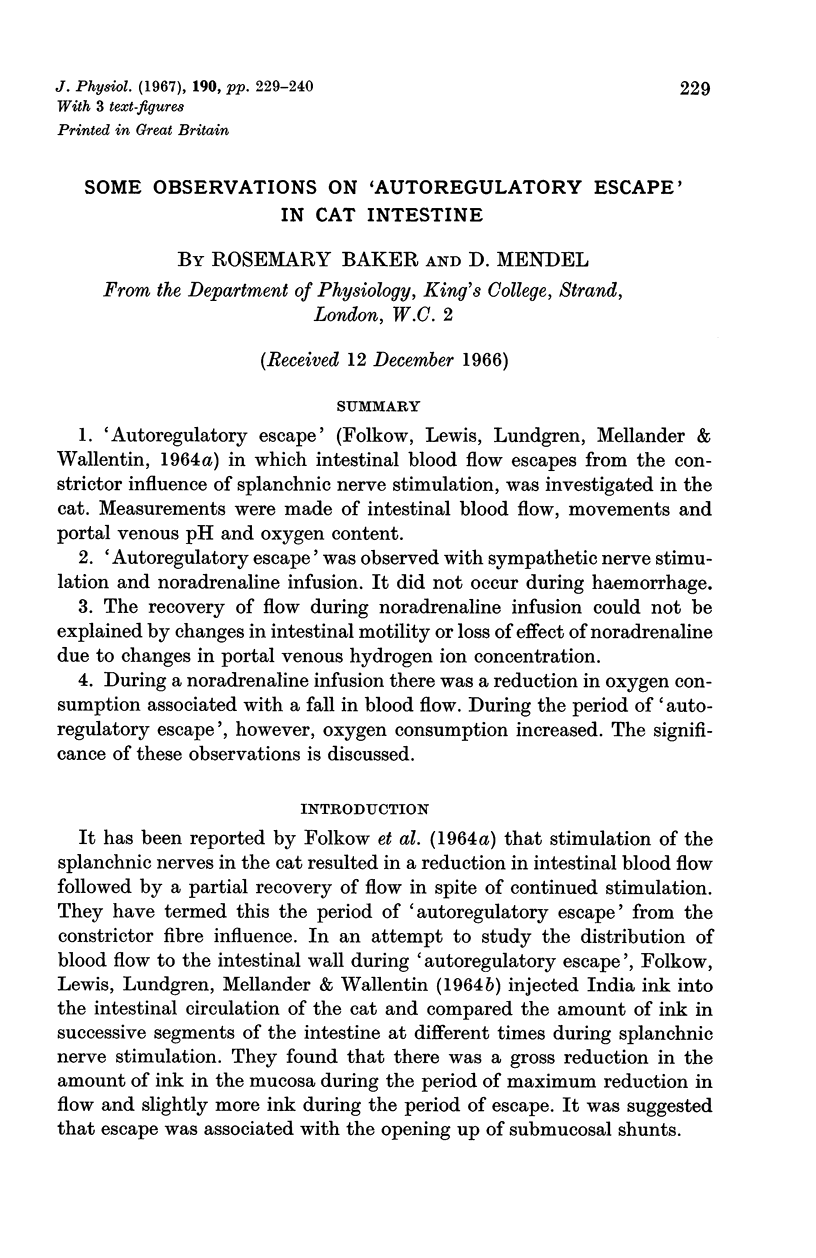
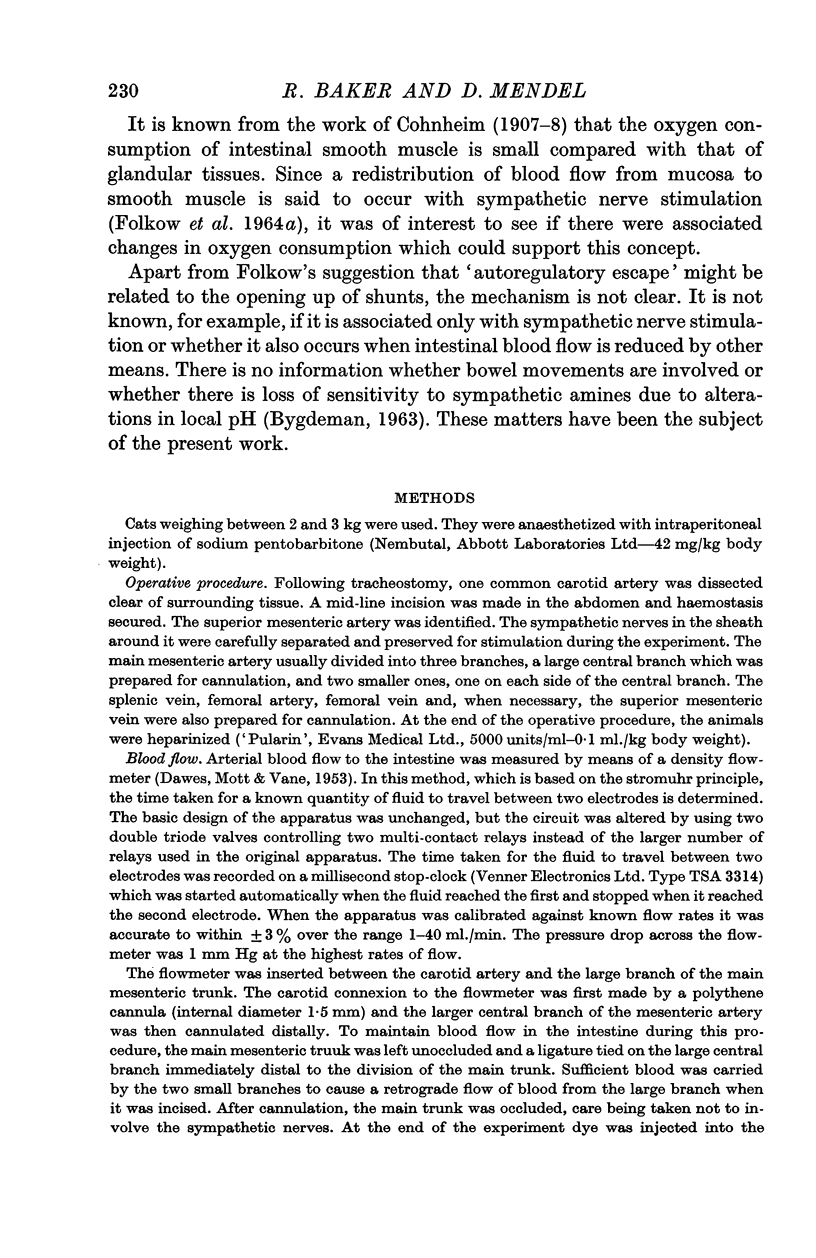
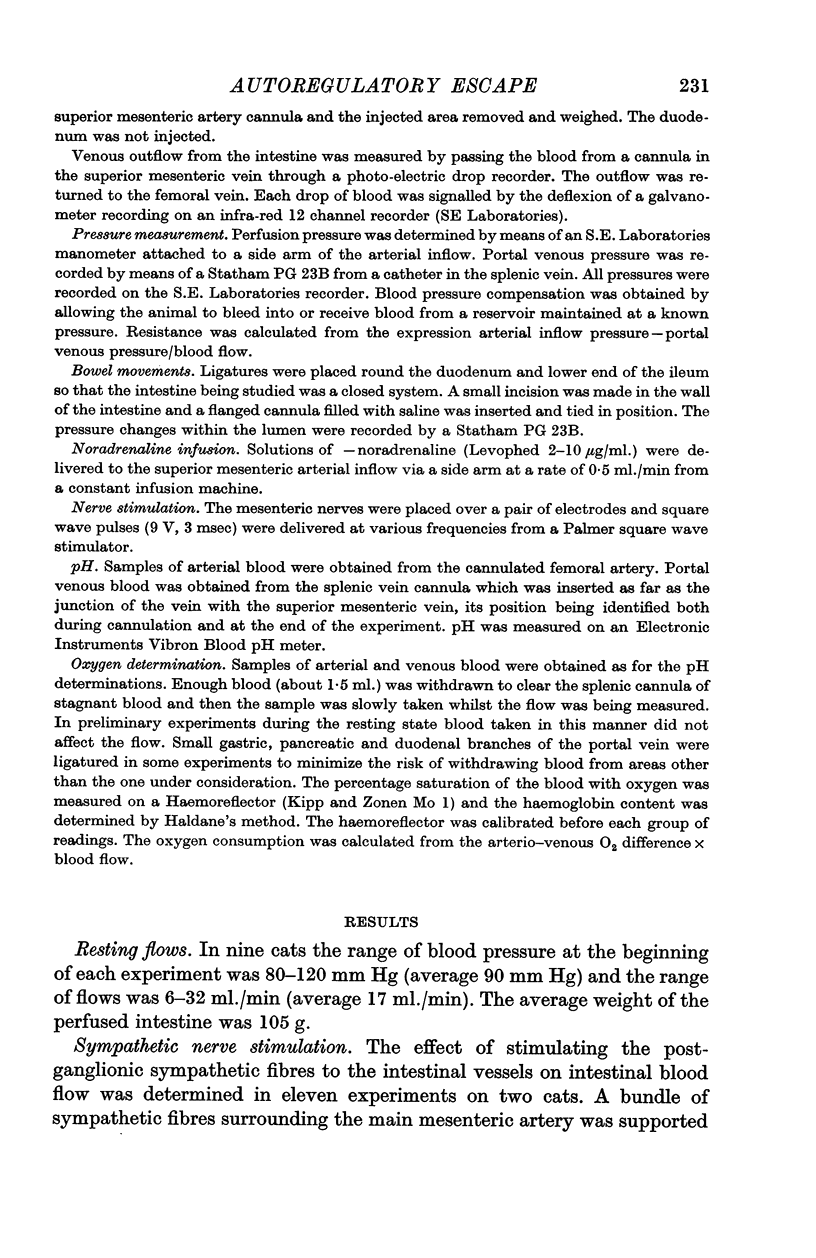
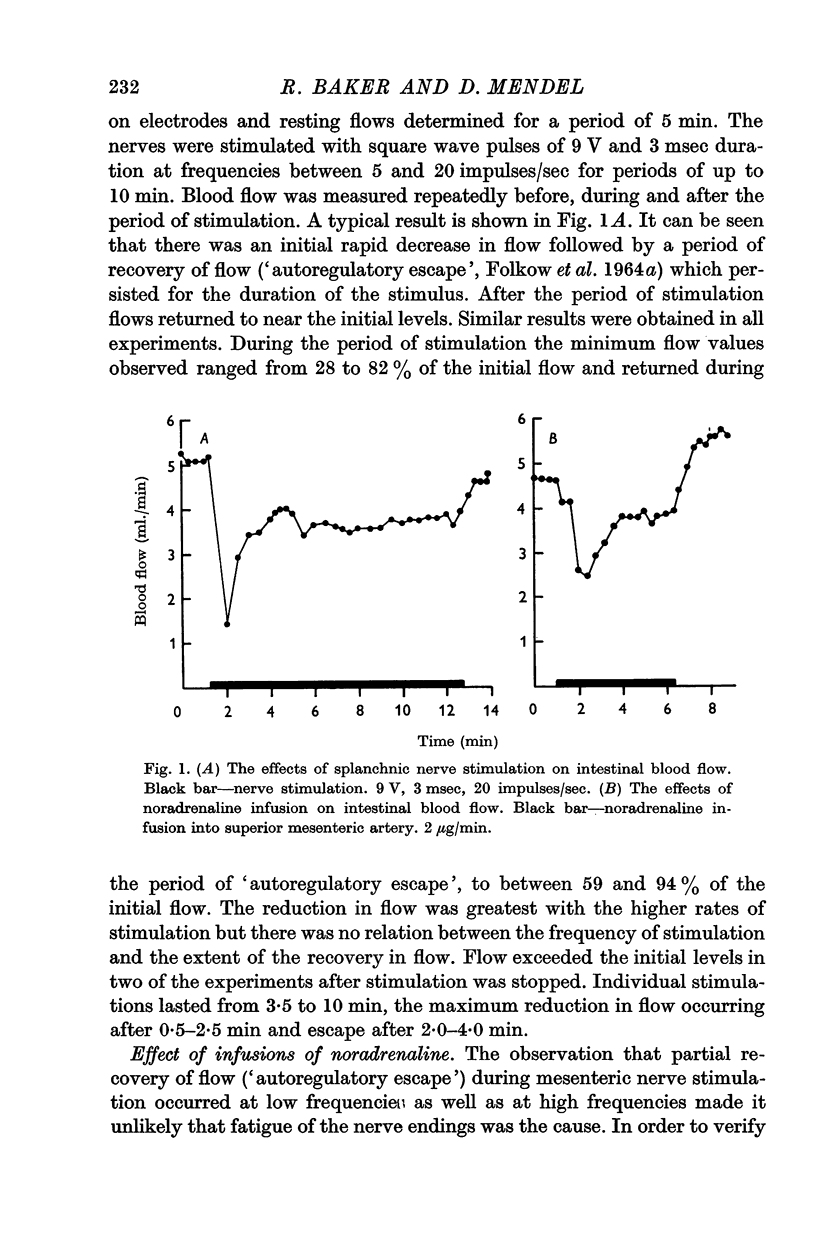
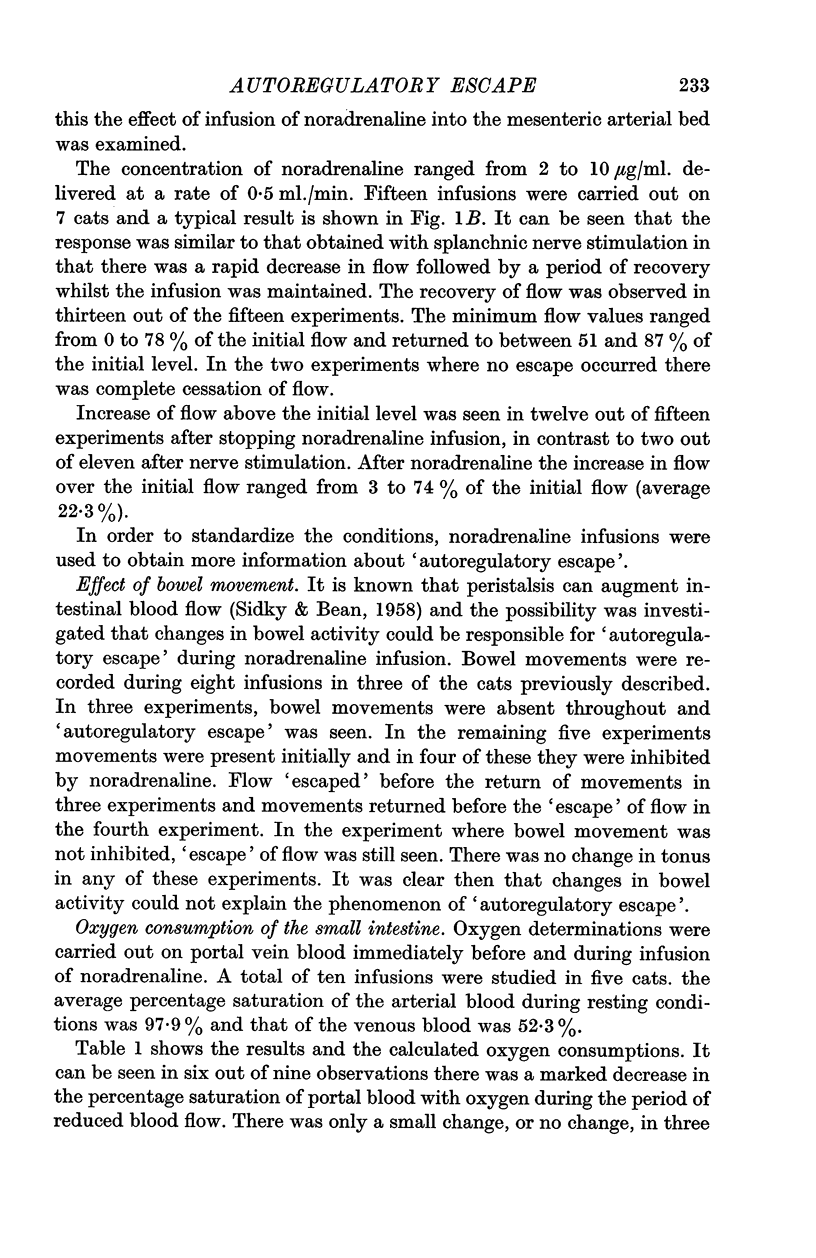


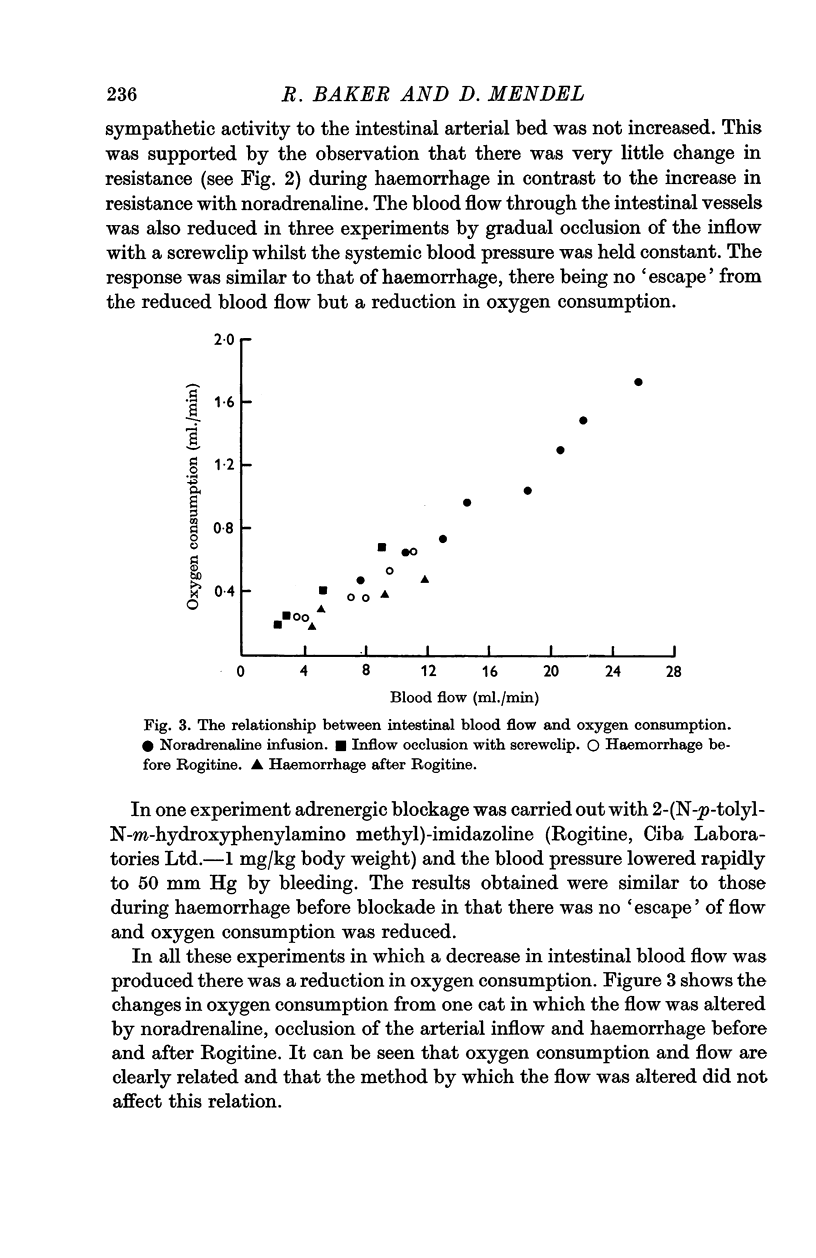
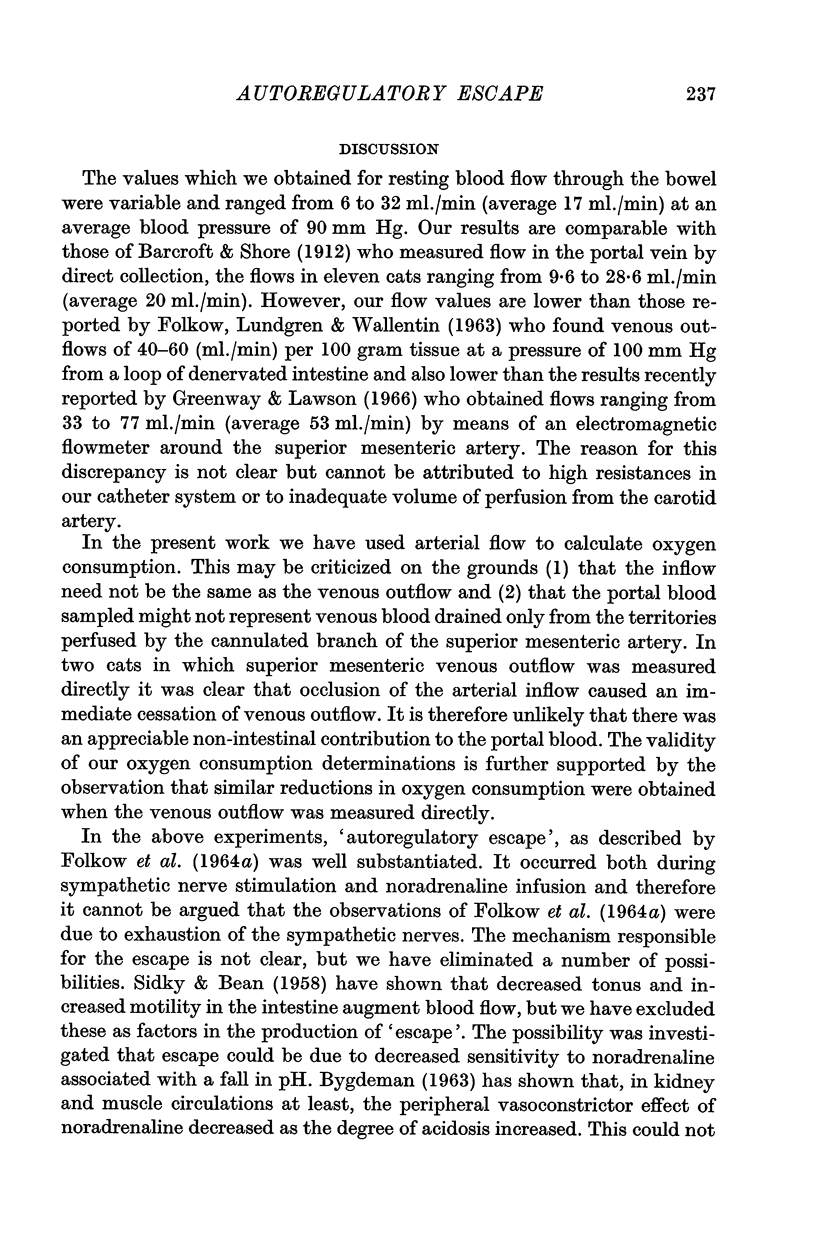
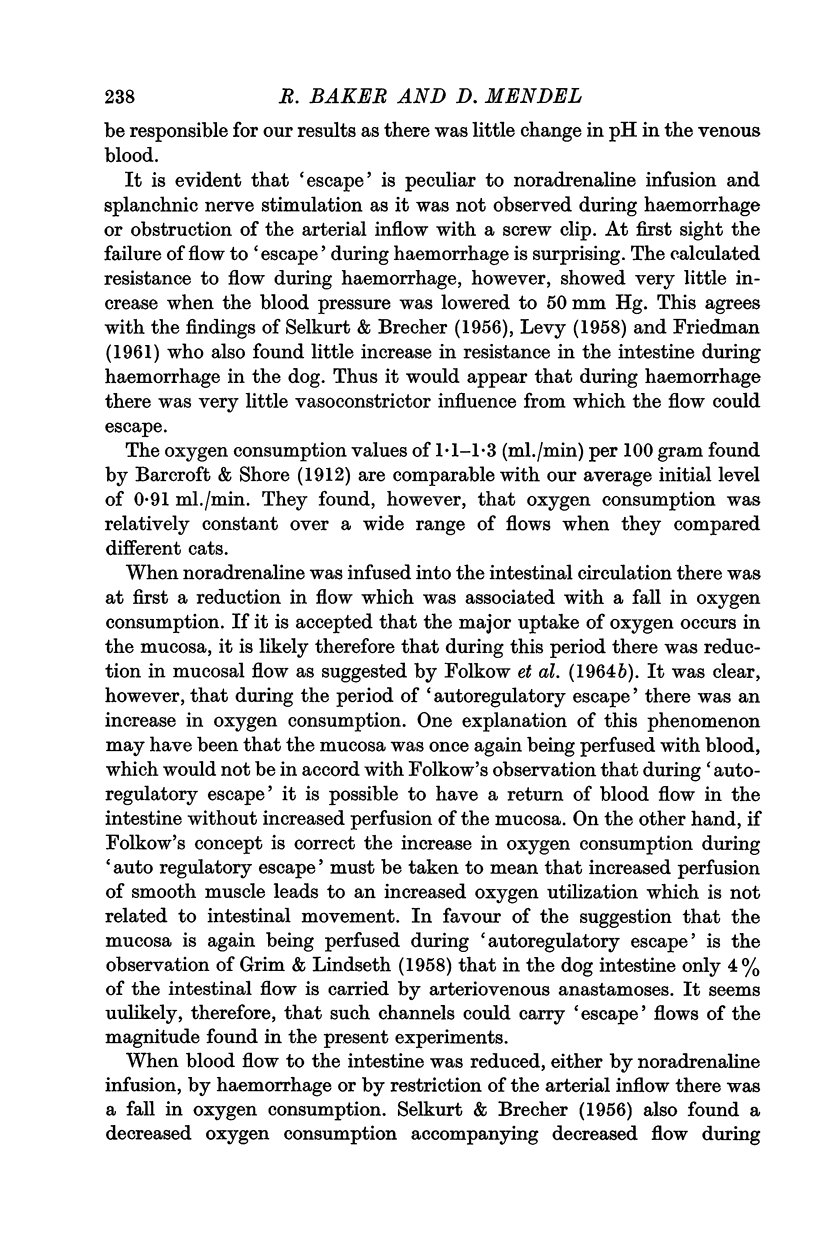
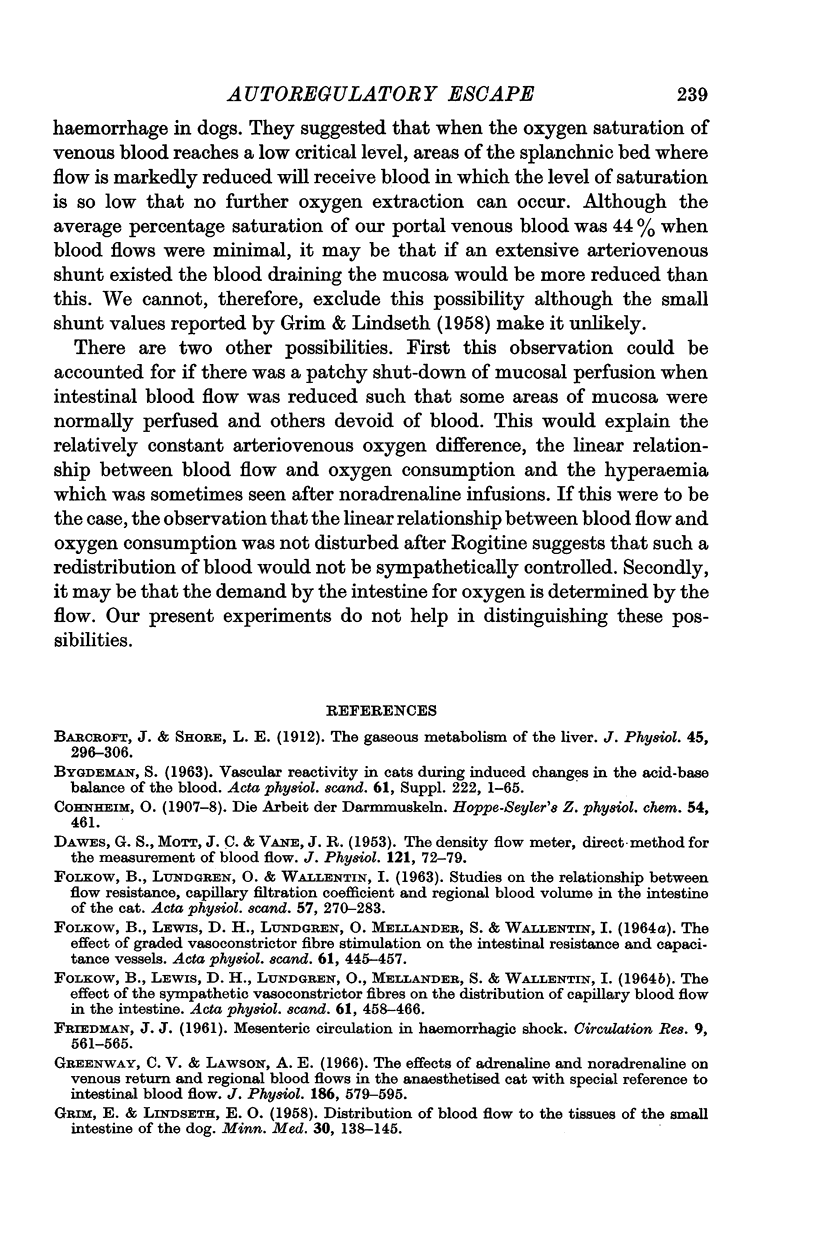
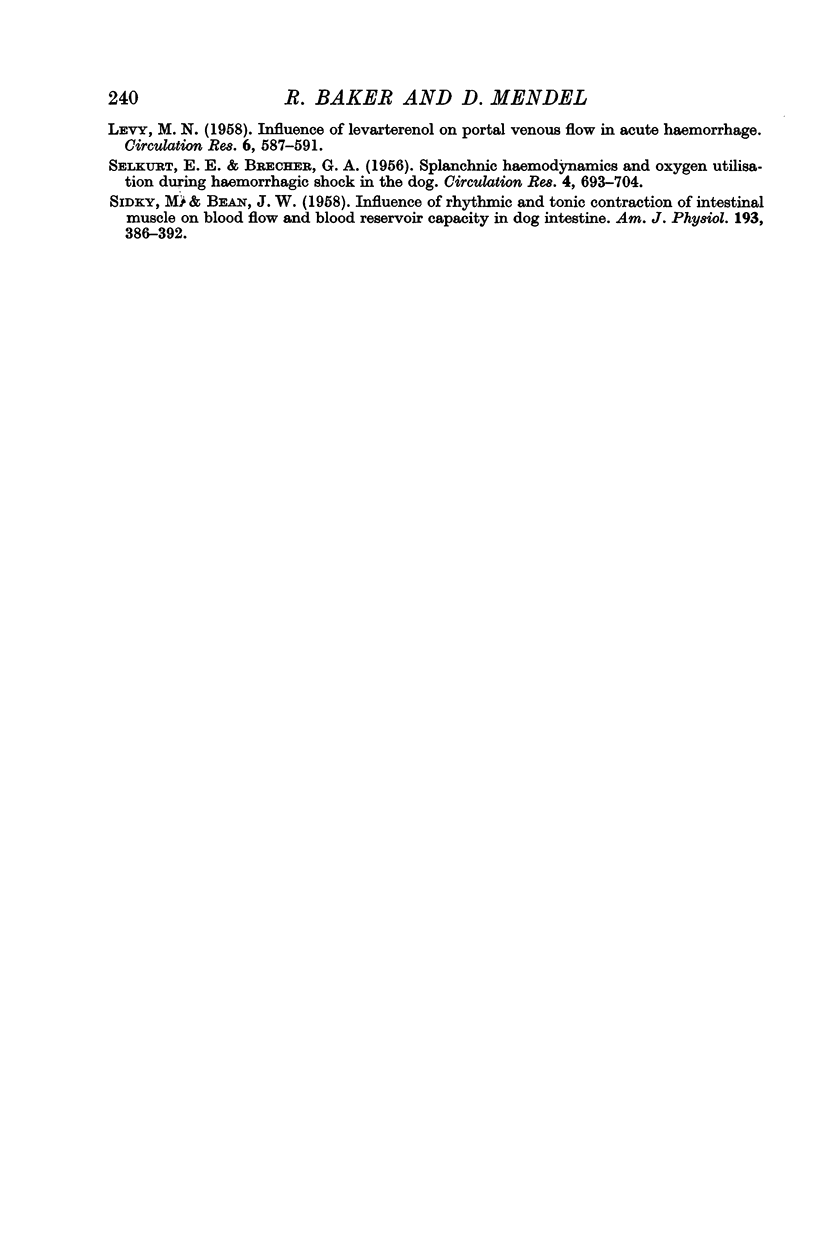
Selected References
These references are in PubMed. This may not be the complete list of references from this article.
- BRECHER G. A., SELKURT E. E. Splanchnic hemodynamics and oxygen utilization during hemorrhagic shock in the dog. Circ Res. 1956 Nov;4(6):693–704. doi: 10.1161/01.res.4.6.693. [DOI] [PubMed] [Google Scholar]
- Barcroft J., Shore L. E. The gaseous metabolism of the liver: Part I. In fasting and late digestion. J Physiol. 1912 Oct 22;45(4):296–306. doi: 10.1113/jphysiol.1912.sp001552. [DOI] [PMC free article] [PubMed] [Google Scholar]
- DAWES G. S., MOTT J. C., VANE J. R. The density flowmeter, a direct method for the measurement of the rate of blood flow. J Physiol. 1953 Jul;121(1):72–79. doi: 10.1113/jphysiol.1953.sp004931. [DOI] [PMC free article] [PubMed] [Google Scholar]
- FOLKOW B., LEWIS D. H., LUNDGREN O., MELLANDER S., WALLENTIN I. THE EFFECT OF GRADED VASOCONSTRICTOR FIBRE STIMULATION ON THE INTESTINAL RESISTANCE AND CAPACITANCE VESSELS. Acta Physiol Scand. 1964 Aug;61:445–457. [PubMed] [Google Scholar]
- FOLKOW B., LEWIS D. H., LUNDGREN O., MELLANDER S., WALLENTIN I. THE EFFECT OF THE SYMPATHETIC VASOCONSTRICTOR FIBRES ON THE DISTRIBUTION OF CAPILLARY BLOOD FLOW IN THE INTESTINE. Acta Physiol Scand. 1964 Aug;61:458–466. [PubMed] [Google Scholar]
- FOLKOW B., LUNDGREN O., WALLENTIN I. Studies on the relationship between flow resistance, capillary filtration coefficient and regional blood volume in the intestine of the cat. Acta Physiol Scand. 1963 Mar;57:270–283. doi: 10.1111/j.1748-1716.1963.tb02591.x. [DOI] [PubMed] [Google Scholar]
- FRIEDMAN J. J. Mesenteric circulation in hemorrhagic shock. Circ Res. 1961 May;9:561–565. doi: 10.1161/01.res.9.3.561. [DOI] [PubMed] [Google Scholar]
- Greenway C. V., Lawson A. E. The effects of adrenaline and noradrenaline on venous return and regional blood flows in the anaesthetized cat with special reference to intestinal blood flow. J Physiol. 1966 Oct;186(3):579–595. doi: 10.1113/jphysiol.1966.sp008057. [DOI] [PMC free article] [PubMed] [Google Scholar]
- LEVY M. N. Influence of levarterenol on portal venous flow in acute hemorrhage. Circ Res. 1958 Sep;6(5):587–591. doi: 10.1161/01.res.6.5.587. [DOI] [PubMed] [Google Scholar]
- SIDKY M., BEAN J. W. Influence of rhythmic and tonic contraction of intestinal muscle on blood flow and blood reservoir capacity in dog intestine. Am J Physiol. 1958 May;193(2):386–392. doi: 10.1152/ajplegacy.1958.193.2.386. [DOI] [PubMed] [Google Scholar]


